Events can be a gamechanger for the spa retailer. Though events come in all sizes and shapes, we’re going to focus on tent sales and parking lot events here rather than home shows or staffed selling at big box stores. In spa retail, these sale events typically run 4-10 days are often used to turn inventory on both new and older models. They can occur in your store-adjacent parking lot or at various off-site locations like a mall parking lot or a State Fair. The common denominator is that being off-site and outdoors, they typically require the use of tents and often occur in a parking lot!
With all the associated costs and effort, many spa dealers wonder if there’s still value for the hot tub retailer in hosting special sales events. To help gauge whether or not events should be incorporated into your next planning session, we’re going to take a look at this question, identify where the value falls, and provide expert tips to maximize this value at your next sales event.
What is the Value of a Sale Event?
Of course there’s value in the immediate sales earned during the event itself. And when working through the planning process, one of the first steps should be to identify a goal for projected sales that allows your margin for these incremental sales to stay close to what it is on core sales.
Too often though, dealers’ idea of event value solely focuses on immediate sales made during the event itself. So the question becomes: Can there still be value (and can an event be worthwhile) when immediate sales don’t cover all the costs involved in hosting the event?
Oftentimes, the bigger gain to be had is in terms of future sales…
When you step back at look at the impact an event has on the entire sales funnel, the clear answer is yes. In fact, immediate sales should only be considered as part of the equation since the bigger gain to be had here is in terms of potential future sales. These are sales made three weeks later at the post-event sale, or the next in-store promotion, or six months down the road when they’re cleaning up their backyard and ready to turn it into their own personal oasis.
In other words, not everyone who lands at an event is ready to buy. For every one sale, dealers can generate dozens of leads that can be nurtured with follow up emails and calls which eventually turn into sales.
Bullfrog Spas Sales Director Terry Guilfoyle agrees that sales events should be more than just a dollar and cents decision for dealers. And this model supports his argument. The idea is that efforts should be aimed along every part of the funnel to ensure a consistent revenue stream.
According to sales expert Colleen Francis of Engage Selling Solutions, “Ninety-nine times out of a hundred, a lack of consistent revenues—the ‘hockey stick syndrome’—is caused by a lack of consistent prospecting. A failure to prospect on a regular basis will inevitably result in irregular revenues, and inconsistent commissions.” Events serve as an ideal way of “filling the funnel” and working to capitalize on customer relationships in the longer-term.
Why do events work so well at addressing the middle and top of the sales funnel? It’s because they offer that one-on-one interaction, that face-to-face connection customers crave when trying to gain understanding and feel good about spending thousands on a hot tub. This is the kind of interaction that translates into establishing trust and effectively building the customer relationship. Simply stated, events offer an experiential opportunity to develop new relationships—not just with event attendees, but with their friends, family, coworkers as well.
Events offer an experiential opportunity to develop new relationships…
Assuming the impression that’s made is a good one, one conversation at the event has the ability to turn into several after the fact when an event attendee tells other family members, friends, and coworkers about the experience later in the day or even later that week. In this way, events offer extra opportunity to get out in front of customers, boost awareness, and generate leads with prospective buyers who may or may not have had hot tubs top of mind before finding out about your event.
Tips for Using Events to Build Brand Awareness
Having coordinated his dealership’s presence at hundreds if not thousands of events, Shawn Maynard from Bullfrog Spas of Ogden shared his recommendations about using events to build brand awareness.
Maynard’s key points include:
- Name and Theme
- Offer
- Placement/Location
- Signage
- Lighting
- Advertising
For tent or parking lot sale events, name and theme matters. “Sale fatigue” is a real phenomenon among consumers, so it’s important to make sure your event is named to generate interest. Constant retail sales that range from Black Friday and Cyber Monday through to St. Patrick’s Day and Cinco de Mayo have desensitized consumers to the point where they have come to expect discounted prices for most consumer goods and don’t necessarily get blown away by the prospect of another promotion.
So how do you convince these customers that your sales event is truly a special offer and a really good deal? Start by picking the right terminology. According to the dictionary, a sale is “a period during which a retailer sells goods at reduced prices” while the definition of an event is “an occurrence of some importance.” Simply making yours a Sale Event rather than just another sale works to connote importance, uniqueness, and limited time—all which drive urgency on behalf of the customer.
Making yours a Sale Event rather than just another sale works to connote importance, uniqueness, and limited time…
You can also help your event stand out by truly making it your best offer of the year. This requires knowing what your customers are looking for. You can slash prices, promise rebates, or incentivize purchases, but ultimately, you want something your target consumer is going to respond to. It helps here to consider the strengths of previous sales events and promotions, then focus your new campaign on past successes.
For a hot tub sale event, popular incentives start with special financing and factory rebates, but can also include free accessory packages or limited-time upgrades (e.g., free steps, cover lifter, or start-up water care kits). Special event pricing also serves as a pull—just make sure it’s better than your regular in-store pricing.
Another way to convey special-ness of an event is through location. While an in-store event can boost sales, nothing says “this is really something special or different” more than taking the event off-site, even if that’s just in your store’s parking lot. Taking the promotion outside of your regular showroom allows you to create a carnival or fair-like atmosphere that works well to draw more people.
Location should be tailored toward regular traffic and/or high exposure. Maynard learned from experience that setting up in a suburban grocery store parking lot offers an easy stopping place and at least two touchpoints since people tend to shop at the grocery store twice a week. Maynard likes to include two weekends to ensure the opportunity for more than one touch, just in case.
Maynard also has found better success when he brings a special attraction to the sale that is not necessarily associated with hot tubs. His store’s favorite is their branded monster truck that seems to be a hit with the whole family. Promotional product giveaways work well too when kids are involved.
As noted, Maynard also pays attention to signage and lighting. Branded tents, banners, and flags make an impression without a lot of transport and setup hassle. Just make sure larger items are tied down on windy days! Even if exterior lighting at your location is adequate, extra lighting should be installed inside the tent to draw attention. He’s had more than one customer return to a tent sale because they got curious having noticed it under the lights afterhours the night before.
Maynard’s bonus tip: Maintain a permanent mobile show event trailer that’s always ready to go!
Large tents, colorful signs, and balloons are all great ways to attract attention, but it’s not enough to depend on event signage to drive traffic. Ryan Pasley, Retail Division Manager of Bullfrog Spas, emphasizes, “If you don’t advertise your event in advance, you’re missing your best opportunity to ensure the right customers come to the sale.” For anyone who’s sold at an off-site sale, you know the difference between a customer who stopped in for the bounce house and one who stopped by after hearing a local radio ad about the special event.
But how do you determine how much budget to set aside for pre-event promotion? Here’s a general, though reliable, rule of thumb: Start with setting your revenue goal for the event. Then spend 10% of this revenue goal to get the word out via local media channels.
For specifics on ad messaging and media buying, check out Tips for Messaging Your Ads and Media Buying Guide. To get the word out via digital platforms, you can generate a tailor-made campaign that reaches the eyes of your future customers using consumer demographics, geotargeting, and other web analytic tools.
Tips for Using Events to Enhance Product Education
Greg Mruk, Store Manager at Pool & Patio Center in Coventry Rhode Island, tells Spa Retailer that the keys to a great off-site sales event are “the best selection, layout, product and people.” The first thing you must do is choose what units you will display at the sale site. Joe Stone of Swim Fitness in Northern California stresses the importance of including “a combination of your biggest, largest, and very best, down to your smallest, entry-level model with a couple of nice, in-between choices” to appeal to customers’ different lifestyles, interests, and budgets.
The fewest number of spas Maynard feels okay showing at an event is six. Any less may make your dealership seem not wholly committed to the business or event. He also finds it useful to install covers and cover lifters on the display models, so spas are protected and he’s not spending all his time scrubbing product down. Having covers on the spas also allows for more POP space.
Once you’ve chosen which spas to display, you need to decide how you want to display them. A winning off-site event layout should take into consideration these factors:
- Enough space between spas for customers to comfortably move around the products.
- Easy access to all components of the spa so salespeople can explain all the best features.
- Electrical cords hidden and/or secured to avoid tripping hazards.
- Effective placement of HD screens for displaying product and brand information.
Aside from product one-sheets and brand brochures, dealers can offer other marketing materials that work to educate the customer. Here are a few tools to take to your next show:
- Since consumers are often compelled by scientific and research-based findings, provide a handout about the Health Benefits of Spas.
- Promoting financing opportunities at the event can make the large ticket item seem more affordable.
- Offer a checklist of potential pre-installation questions.
- One of the biggest challenges to overcome in creating customers is the concern about maintenance; so offer a how-to demonstration to show how easy it can be.
- Display promotional material on accessory options.
- Ask visitors to take a quick survey on how hot tubs may improve their lives (health, family, social, wellness).
Tips for Using Events to Close More Sales
You can gather a lot of leads at events, but turning leads into customers requires an effective follow-up system where leads are nurtured along every step of their buying journey. Marketing Sherpa reports that 79% of marketing leads never convert into sales. And lack of lead nurturing is the most common cause of this poor performance. One effective way of getting a second chance at closing these leads is with a post-event sale that mirrors the offer you advertised at your event. This post-sale should happen soon enough after the event that the customer will still recall the experience, but long enough for you to organize in-store logistics and send out invitations to your new leads (two to three weeks after is usually a good timeframe.)
Lack of lead nurturing is the most common cause of poor conversion performance.
Since you’re already setting up the event, you can maximize your efforts by also hosting a pre-show sale the evening before the actual event starts. Invitees should include your top prospects, with communications about the “exclusive engagement” going out them in the one to two weeks before. To make it its own special event, you can entice customers with an extra offer or giveaway and provide more of a party atmosphere with drinks and snacks.
In addition to pre- and post-event sales, Sean Hunsinger, resident sales expert with Spa Retailer, offers the following advice to close more sales at off-site sales events:
- Plan to sell one-and-a-half times the units you show at your event. If you show six spas, you should sell nine spas.
- Have at least one operating spa on site so buyers can see the unit in action.
- Staff with people who can make a sale in 30 minutes instead of 30 days.
- Don’t forget to bring sales terminals, or better yet equip sales staff working the event with mobile devices they can use to finalize sales on the spot.
In general, make sure large signs and banners are visible from a distance and that sign stands have flat bottoms so customers won’t trip over them. Use large planters or bags of spa chemicals to keep sign stands from blowing over in windy conditions and to anchor tents. Be sure to include extras being offered like cotton candy, kettle corn, and children’s activities such as bounce houses or pony rides to make your event an attraction to the whole family.
Off-site sales events can be an extremely lucrative way to expand your customer base and educate the general public on the benefits of home spas. So what are you waiting for? Start planning your “Spa Season Never Ends” sale event now!


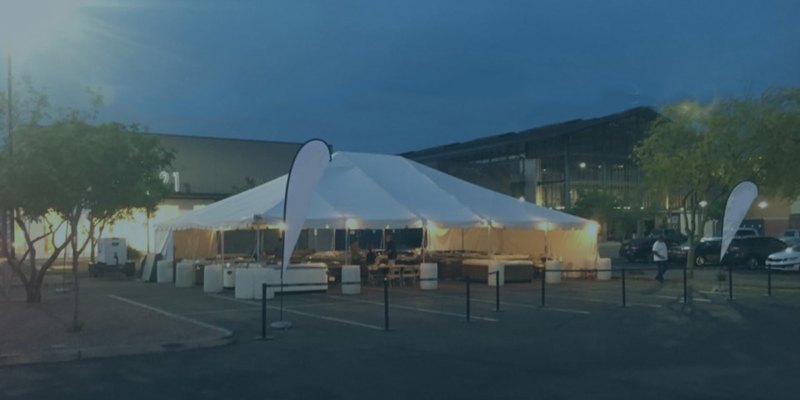
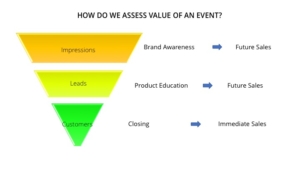

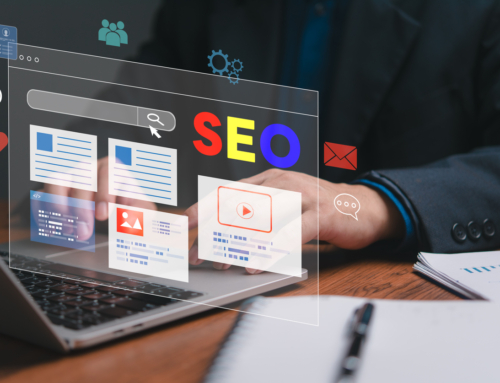
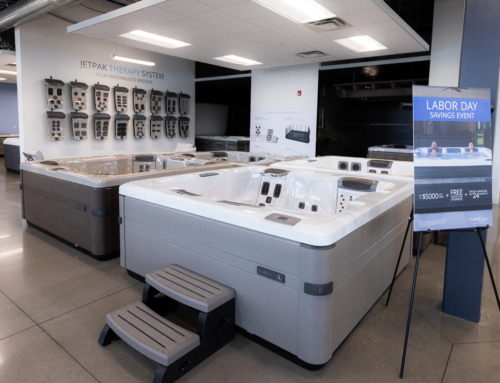

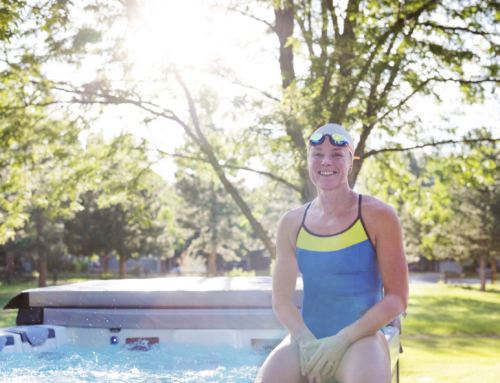

Leave A Comment